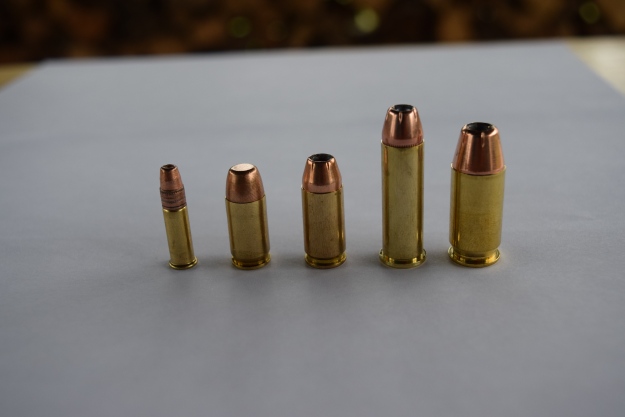I've long said that .380 ACP would be one of the smallest self-defense cartridges you'd ever want to carry in your firearm. But, what is the .380? Is it a 38 caliber? Is it like a 9mm? Is it sufficient to deter crime or an attack? In order to answer these questions, I figured it'd be a good idea to take a closer look at this little self-defense cartridge that dates all the way back to 1908.
First, let's debunk some mystery concerning its size.
The .380 is not a .38 caliber. In fact, if you want to get technical about it, it's actually a .35 caliber. To be exact, it's .355, which is equal to 9mm and similar in size to the venerable .357 magnum. What we are talking about here, however, is just the diameter of the projectile itself and not the entire cartridge.
Confused yet? Good. Let's move on…
To make matters even more interesting, the .380, also known as “9mm short,” closely resembles the very popular 9mm parabellum, as you can see in the below picture. If you don't know any better, you could confuse the two. Whereas the 9mm is 9X19 in size, the .380 is 9X17 in size. In other words, the .380 is shorter (and even a bit narrower) than it's bigger sister is.
Anyone who claims that the Automatic Colt Pistol .380 is insufficient believes so because the casing is smaller, and therefore must hold less gun powder (please understand that more powder means a faster traveling bullet, along with higher pressures, and more energy transfer). They would rightly believe that the .380 is less effective than a lot of other rounds on the market, today—including the 9mm.

.22lr, .380 ACP, 9mm Luger, .38 SPC, .45 ACP — Left to right.
This does not mean that the .380 does not work as a self-defense round, however.
Projectile and gunpowder technology has come along so far that, just as long as your handgun reliably cycles your self-defense ammo of choice, you can put someone down with a .380. You may need to unload an entire magazine, but it'll work. Again, the problem lies not with the size the projectile, but with the amount of gunpowder sitting behind it. The fact that the cartridge is so short and/or thinner than other popular choices, causes some to think that the penetration of the .380 to be insufficient. While it is far from insufficient, it is also far from the best penetrating self-defense round on the market.
Having said all of that, the gun you've got in your hand is better than the one you've got in your safe, and pistols chambered in .380 are usually much more comfortable around the waistband. Very rarely do you see a full-sized handgun chambered in such a small cartridge. Most of the pistols chambered in .380 ACP are meant for optimal concealment making them ideal in situations where you don't want anyone to know you've got a gun.
In other words, if you're going to carry a .380, then it is sufficient for your needs. Just make sure you practice with it regularly, and make sure that it cycles your chosen SD ammo before you begin to carry it around with you.
Other times, even when concealment isn't an issue, people still prefer them just because they are lighter in weight and don't cause the gun carrier as much sweat on the portion of body where it's worn. Sound Off Gun Carriers! Do you carry a gun in .380? If so, let us know which one, and what ammo is in it? Then, make sure you sign up for our FREE Newsletter.
